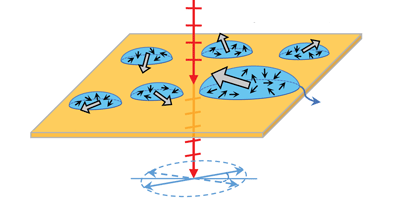Listening to Spin Fluctuations
The implementation of solid-state spin qubits for quantum computation often requires an understanding of the physics of coupling between a central electronic spin (an electron or a hole spin) and a bath of surrounding nuclear spins. This coupling leads to decoherence and dephasing of the central spin, which is a limiting factor for computational applications. This problem has proven to be theoretically very difficult, especially in low magnetic fields, because of its many-body and strongly correlated nature, despite over a decade of effort. Some theoretical models predict the functional form of the decoherence, but these have been largely untested since it is difficult to measure these long timescales using conventional pump-probe techniques.
Now, in an article published in Physical Review Letters, Yan Li from Los Alamos National Laboratory, New Mexico, and collaborators demonstrate an entirely new experimental approach to address this problem. Their approach does not perturb the central spins, but using spin-noise spectroscopy, they “listen” to intrinsic and random spin fluctuations of the central spins while they remain in thermal equilibrium with the spin bath. Through the fluctuation-dissipation theorem, the frequency spectrum of these stochastic fluctuations reveals both the relevant timescales and functional form of the spin dynamics.
The technique is demonstrated on ensembles of (In,Ga)As quantum dots with single hole spins, and reveals very long spin-correlation times. A surprise find was a transition of the spin decay functional form with increasing magnetic field, from exponential to inverse-logarithmic, which stands in marked contrast to many leading theoretical predictions. – Athanasios Chantis





